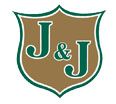At least nine destructive termite pest species attack structural wood within homes and buildings in Louisiana. Most residents are well aware that the invasive Formosan subterranean termite (Coptermes formanosus) is the most economically costly and destructive termite pest in Louisiana, but eastern subterranean termites (Reticulitermes flavipes) inflict a sizable minority of termite-related structural damage in the state. Other termite pest species in Louisiana include dark and light subterranean termites, and arid-land subterranean termites. While subterranean termite pest activity accounts for more than 90 percent of all termite-related structural damages reported annually in the US, multiple drywood termite species are also pervasive pests of woodwork in the Gulf Coast states and the southwest. The drywood termite pests found in Louisiana include western, dark western, West Indian, and dark southeastern drywood termites, the most destructive of which are native southeastern drywood termites and non-native West Indian powderpost drywood termites.
Although subterranean termite infestations are more common and more damaging than drywood termite infestations, infestations established by the latter are far more challenging to detect within structures. This is because drywood termite infestations can be initiated within any nook and cranny imaginable inside and on the exterior of structures, while native subterranean termite infestations are largely limited to the substructural wood components situated within close proximity of their ground soil habitat. Drywood termite colonies are contained within a single nest located within above ground wood items, and the only inhabitants that leave the nest are winged reproductives (alates) during swarming season.
By virtue of their small size and flying ability, drywood termite alates initiate infestations on rooftops, in attics, in wall voids, in wood siding, and in wooden furniture, which makes detecting the location of drywood infestations very difficult. Unlike drywood termites, subterranean termites will rapidly dessicate and die if they are exposed to conditions outside of moist soil and wood, but drywood termite alates can readily infest just about any wood source, dry or moist. In an effort to make drywood termite infestations easier to detect, pest control researchers have developed detection tools for pest control professionals to use during inspections. These high-tech tools include X-ray devices, infrared imaging devices, devices that detect odors emitted by drywood termites, microwaves, optical borescopes, and some pest control firms detect drywood termite colonies with termite-sniffing dogs. An effective drywood termite detection device would end the practice of knocking down walls to find drywood termite infestations during inspections. Until a detection device is adopted by the pest control industry, pest control professionals will continue to rely on fumigation and spot treatments to eliminate drywood termite infestations from structures.
Have you ever known someone who fell victim to a drywood termite infestation?
Tags: Drywood Termite Control, Drywood Termite Inspection, Termite Control



